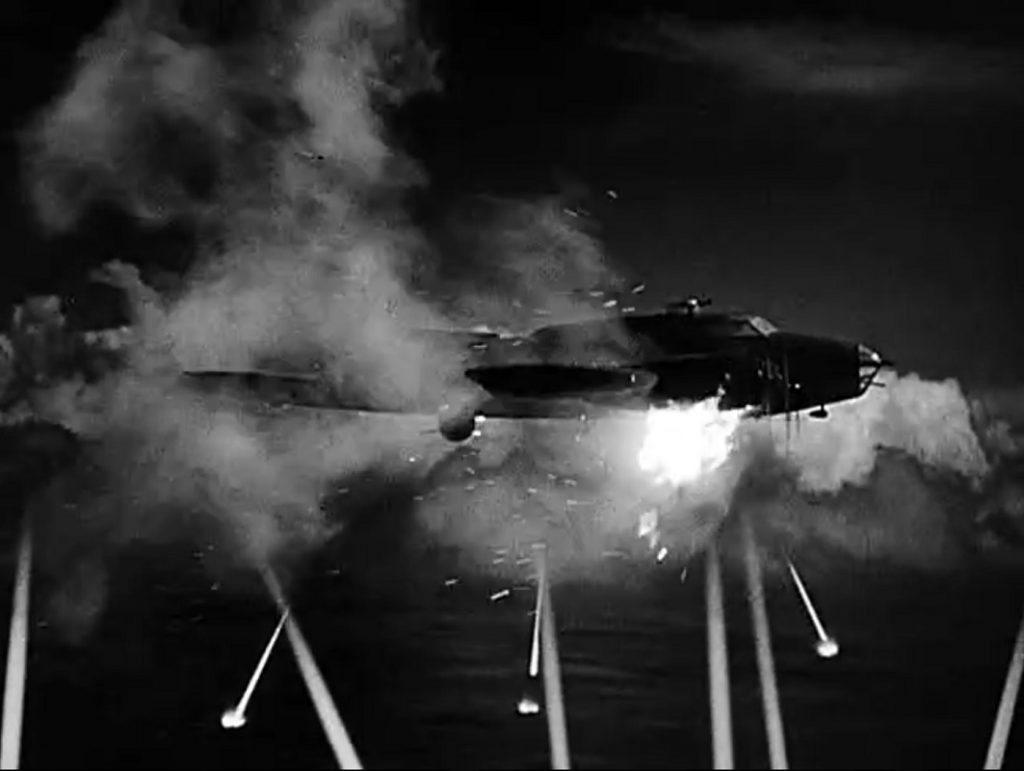




1943 – Bombardier
The visual effects for this movie were incredible… with one tiny exception. So let me just address that one moth in the room and be done with it. There was a shot in which a man is chewing tobacco. A badly animated white cartoon moth is in the room and he spits his chaw at the moth, hitting it. Little white cartoon splash marks squirt from the assaulted insect, and it flutters to the ground. Why that little inane Looney Tunes animated moth was in the movie is beyond me. Maybe because it was supposed to parallel how the whole movie is saved because he spits his chaw in the face of an evil Japanese officer to facilitate the climax and resolution of the film’s main conflict. I don’t know, but it looked kind of stupid.
But aside from that, the Oscar nomination for Best Visual Effects was well-deserved. In fact, I’m almost surprised it didn’t win. The visual effects were that good. So it was a war film that followed the first American Bombardiers as they went through training camp, and ended with the completion of their first mission. They were tasked with bombing a Japanese munitions depot at night. The simulated explosions throughout the movie were pretty standard fare, but that climax kicked things into high gear.
There were great scale models, flashy lighting effects of the Japanese search lights, anti-aircraft cannons firing at the approaching bombers, the smoke, the fires, the bullets, and the fast-paced chaotic dogfight in the skies above Japan, all combined to make an exciting US mission to destroy the enemy target. They layered separate shots of Japanese fighters on top of each other, making it appear as though there were dozens of planes flying fast and furious in a crowded sky. That was pretty amazingly done. And that was just the approach to the target!
The second phase of the attack was the fires that were started on the ground by a group of captured American soldiers, so that the attack party could know where to release their deadly cargo of bombs. There were two places in the film where a character would say something like, “We’re going to give them hell!” But both times, there was a background sound that would suddenly get loud enough to drown out the word “hell.”
And finally, when the bombs were released, hell was most certainly dropped on the enemy. The massive explosions and fires were incredible. I loved the shots where they showed the city from a high altitude perspective. You can see the burning buildings and streets as the incendiary bombs exploded everywhere, releasing seething seas of flame and destruction. It was thrilling to see on the screen. The sheer volume of liquid fire that covered the city was a great climax to the story of the first American Bombardiers in the war.